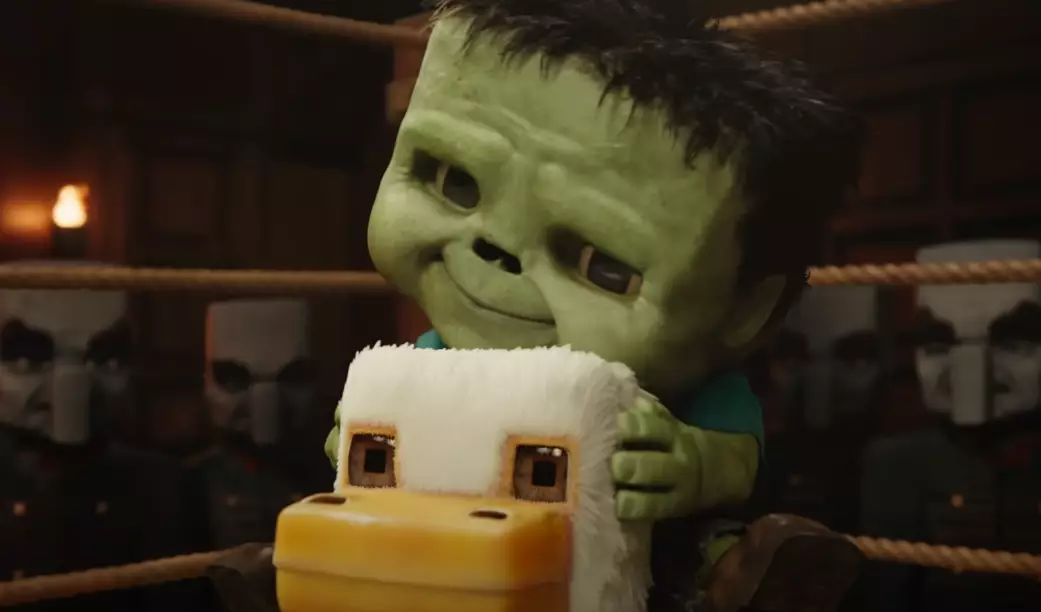The world of gaming often intertwines with the realm of cinema, but seldom do we witness a convergence that sparks as much enthusiasm as the latest triumph of the “Minecraft Movie.” Jesse Ehrman, the chief of Warner Bros. Pictures, recently expressed his astonishment regarding the emergence of certain unexpected phenomena that have captured the imaginations of fans. Among these phenomena is the notoriously comedic “chicken jockey”—a combination of a baby zombie riding a chicken that has inexplicably taken the fandom by storm. Ehrman candidly admits that, while he foresaw excitement surrounding the film, the intensity of the chicken jockey’s popularity caught him off guard.
Despite erratic trends in audience behavior, Ehrman asserts that the primary goal of the film adaptation has always been to resonate authentically with the Minecraft community. He emphasizes the importance of staying true to the essence of the game, stating the value lies in crafting an engaging experience rooted in fans’ shared experiences. This perspective demands scrutiny, as it exposes the intricate dance between corporate decision-making and creative expression. Can studios like Warner Bros. genuinely capture the unique quirks that define a game without suffocating its spirit under commercial interests?
Audience Reactions: A Raucous Celebration
The heartwarming reactions from audiences are perhaps the most compelling aspect of the movie’s success. Reports tell of theaters erupting with chaos during key scenes where chicken jockeys appeared. Fans celebrated with animated fervor—throwing popcorn, jumping from their seats, and some even escalating the festivities to a point where police intervention became necessary. Director Jared Hess’s humorous take on the situation highlights a crucial point: cinema should be a place of joy and shared community.
Yet, one must question whether such outbreaks are emblematic of a deeper issue. Are viewers now seeking such over-the-top experiences in response to a continuous stream of mundane cinema? In an era of blockbuster fatigue, the intense reactions to a seemingly trivial game icon showcase a craving for authenticity and the communal bond that films, especially those tied to beloved games, are capable of fostering.
A Franchise in the Making
As discussions of a sequel unfold, Ehrman confidently indicates that failing to capitalize on the film’s immense success would be an oversight on Warner Bros.’ part. With “A Minecraft Movie” grossing over $700 million globally—placing it as the second-highest-grossing video game adaptation—Ehrman highlights an emerging trend within the industry: demand for sequels driven by fan enthusiasm rather than traditional engagement metrics.
This evolution in Hollywood’s approach to filmmaking, especially within the realm of adaptations, signifies a potential shift in how studios might prioritize niche audiences. The raucous excitement surrounding the chicken jockey might prompt filmmakers to explore more unconventional characters and stories that exist just beneath the surface of mainstream gaming culture. Are we starting to see a landscape where cultural phenomena from the gaming community can stand tall, not merely as side notes to larger narratives, but as central themes worthy of cinematic exploration?
Implications for Future Adaptations
Moving forward, the implications of “A Minecraft Movie” extend beyond mere financial success. The growing prevalence of artifacts like chicken jockeys—all seemingly childish and silly—serves as a reminder that audiences crave sincerity and charm within the cinematic experience. The industry should be mindful of what these extreme reactions reveal: a new generation of moviegoers is less interested in polished narratives and more invested in the emotional responses that come from their beloved digital worlds.
Film studios must remain vigilant in recognizing and nurturing the unique aspects of gaming culture that mobile or home console experiences deliver. In doing so, they may not only reap the financial benefits that come from capturing the zeitgeist but also create a more diverse and inclusive film landscape.
Warner Bros., riding the wave of this newfound creative direction, might just find that the nooks and crannies of gaming culture hold untapped cinematic gold. As “A Minecraft Movie” solidifies its place in film history, one thing is clear: the fun has only just begun.

